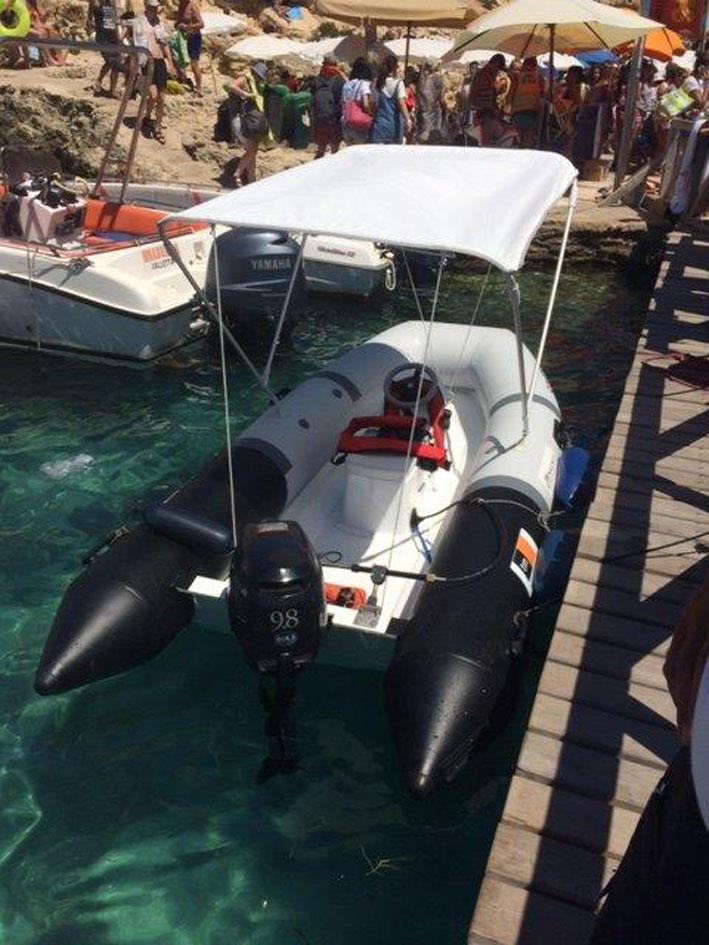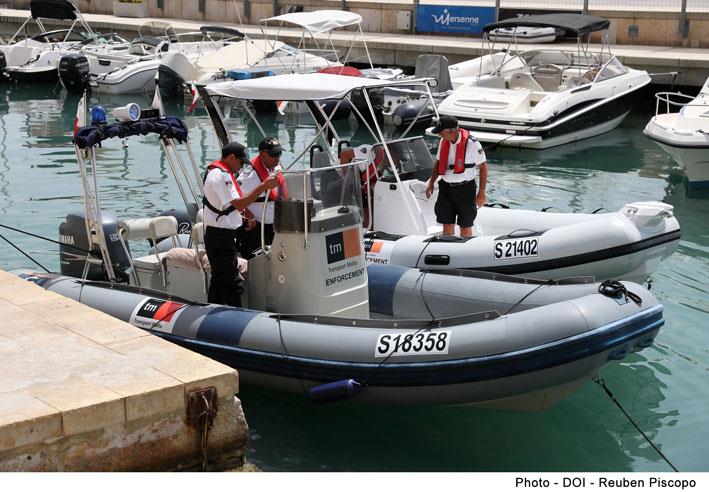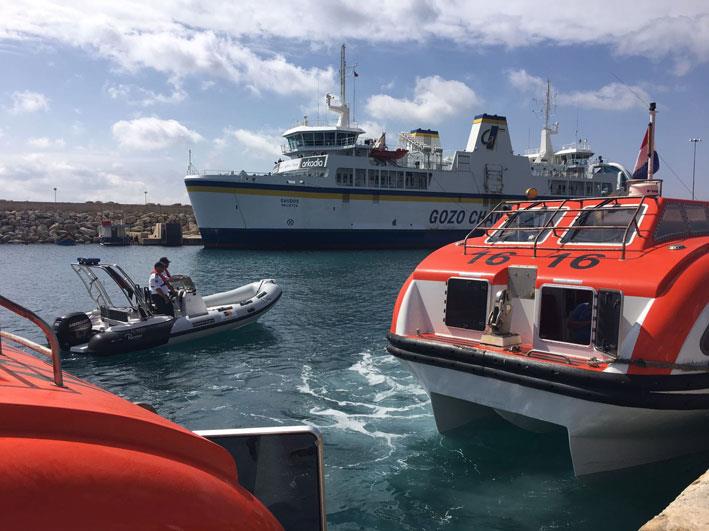Many tend to regard Transport Malta as an entity that simply regulates the use of vehicles on our roads. In actual fact, however, the Authority’s work stretches far beyond the roads of Malta and Gozo and a large branch of it relates to our seas.
The Transport Malta Maritime Enforcement Unit is the authority that enforces and regulates transport in Maltese waters, and it is especially important during the summer months when it comes to making sure that our seas are safe. The Malta Independent on Sunday spent a day on board one of Transport Malta’s vessels with the senior manager of the section, Patrick Pollacco, to learn exactly what work the Transport Malta Maritime Enforcement sector does on a daily basis.
The working day begins with today’s skipper of the boat – Kenneth Spiteri – running through a set of pre-patrol checks to ensure that everything is in order. Safety is strongly emphasised and we are each handed a life jacket that we are told to keep on at all times. Another element of safety is that of communication and Spiteri calls Valletta Port Control by radio as we leave Sa Maison to ensure that the boat’s communication system is in working order. Pollacco explains that it is imperative for every vessel to have a proper and working system of communication such as a VHF radio that can be used in the event of an emergency.
One of the jobs of the Maritime Enforcement Unit is to regulate the speed of vessels in the harbour area and to ensure that no vessels undertake certain dangerous manoeuvres in this area. The speed limits at sea are marked out by means of large buoys which have the relevant speed limit painted on them and all vessels are expected to adhere to that limit after passing the buoy.

Another element that falls under this section of Transport Malta is that relating to swimming areas, which are marked out during the summer months in several bays across the Maltese Islands. Pollacco explains that these areas are reserved specifically for swimmers and no sea-craft whatsoever – not even a canoe – can enter them. These swimmers-only areas are marked with red and yellow buoys and Pollacco tells us that vessels cannot be tied up to either the buoys or the ropes to which they are attached. He tells us that the Unit also ensures that the ropes and buoys are in the right place and well maintained, and if they are not they advise the maintenance teams to carry out any necessary work.
Part of the Unit’s work is carrying out inspections on commercial vessels, a process to which The Malta Independent is witness as Spiteri steers the boat towards one such vessel. Pollacco boards the commercial vessel and carries out his usual checks – which are to ensure that the boat has all the necessary safety equipment, such as lifejackets, needed to carry passengers and that the boat itself is licensed. Each vessel must have a Commercial Vessel’s Certificate which is granted by the Authority and verifies that it is sea-worthy. In addition, anyone driving such a boat must have the required licence from Transport Malta. This is the process that Transport Malta undertakes for a basic inspection of a commercial vessel but there are, of course, more detailed inspections that they carry out from time to time, when they deem necessary.

Pollacco also appealed to all those renting such boats to make sure that they are commercially licensed. The most telling sign of this licence can be found in the registration number of the ship, which should be white on a black background.
As the Maritime Enforcement Unit, Pollacco explains that their message is simply for people to operate and drive boats with prudence because, in reality, its aim at the end of the season is not to tally up how many fines they have imposed but that there have been no fatalities or accidents. That, he says, is how they measure the success of the Authority: that a summer passes without a serious incident. “Our appeal is that people show prudence, so that a day of pleasure at sea does not turn into a tragedy with ugly repercussions for all those involved”, he concludes.

Table 1:
What should you ask before going out to sea?
· Have you checked the weather forecast?
· Have you seen the latest sea-farer’s notices? (these can be found at www.transport.gov.mt)
· Have you checked if there are any defects on or damage to the boat?
· Do you have enough fuel for the journey, and enough extra as a reserve?
· Do you have enough food and water?
· Is all the recommended safety equipment on the boat and in good condition?
· Have you shown the passengers where the safety equipment is and how to use it?
· Have you told someone of your destination and voyage plan?
· What means of communication do you have onboard in the event of an emergency?

Table 2:
What should you have on board?
· Personal floating devices for each person on board
· Fire extinguishers
· Waterproof first kit and torch
· Life raft or dinghy
· VHF Radio
· GPS for navigation
· A visual signal, such as a coloured flare, to call for help
· A bucket or a water pump

Table 3:
What should you keep in mind when out at sea?
· Swimmers’ areas: In the summer, several areas around the Maltese Islands are reserved specifically for swimmers and any type of vessel is prohibited from entering them or mooring to the buoys marking the area. Certain areas have passages where vessels can pass, but speeds in these passages must be kept at their lowest.
· Speed limits: Sea-goers are obliged to observe the speed limits that are set by Transport Malta across territorial waters.
· Rescue plan: Always have a rescue plan ready.
· Alcohol: As when driving a car, alcohol consumption can affect your judgement and ability to control your vessel. No vessel can be captained by people under the influence of alcohol.
· Be attentive: Always pay attention when driving your vessel. Make sure you are within the speed limits and keep your eyes on other vessels or swimmers and divers. Keep a good distance from reefs and shallow water and, most importantly, always use prudence and common sense.
· VHF Radio: Always carry a VHF Radio with you, and use it responsibly. You should always have one because out at sea there may not always be reception for using a mobile phone.
· Safety Procedures at Night: The vessel’s navigation lights should always be used if the vessel is being driven at night or in low visibility.
Table 4:
Useful contact numbers:
Emergency – 112: Valletta Port Control; 2291 4491/2: AFM Rescue; 2180 9279
VHF Radio:
Valletta Port Control: Ch 12
Marsaxlokk Port Control: Ch 14
Malta VTS: Ch 69
Warnings & Weather Updates: Ch 11
Emergency Messages: Ch 16